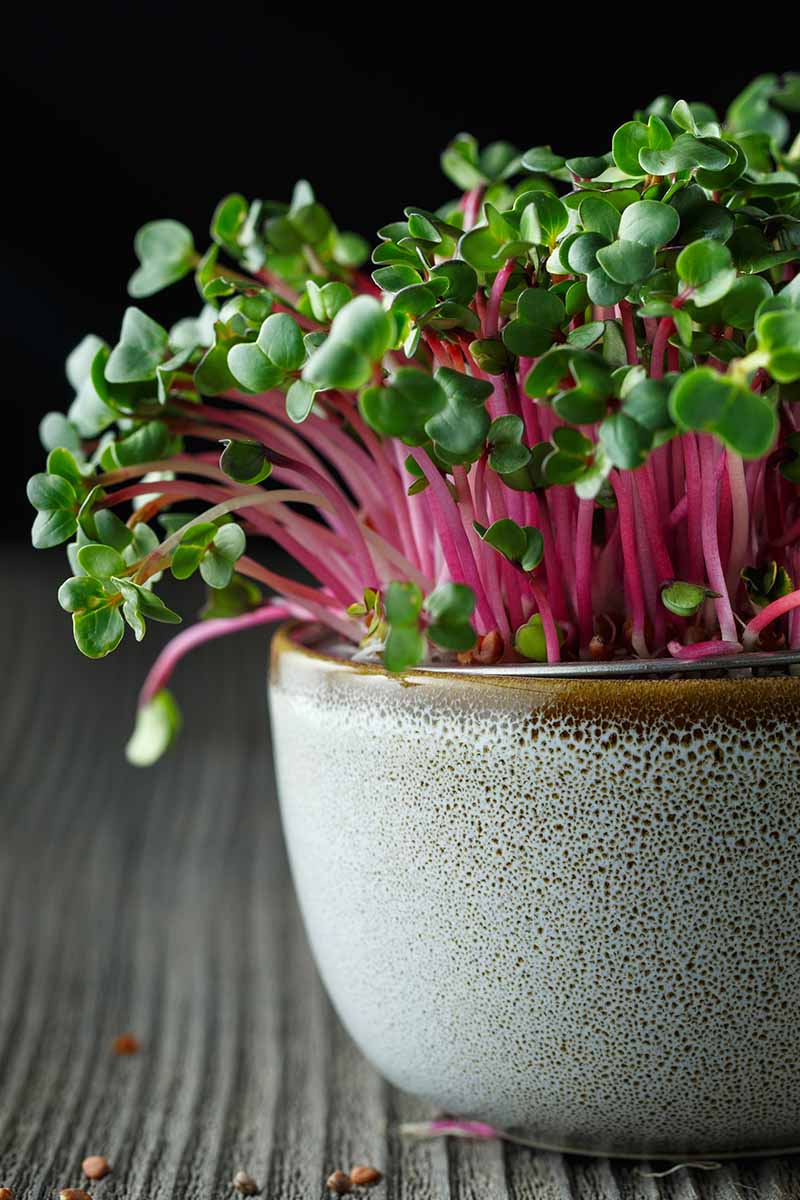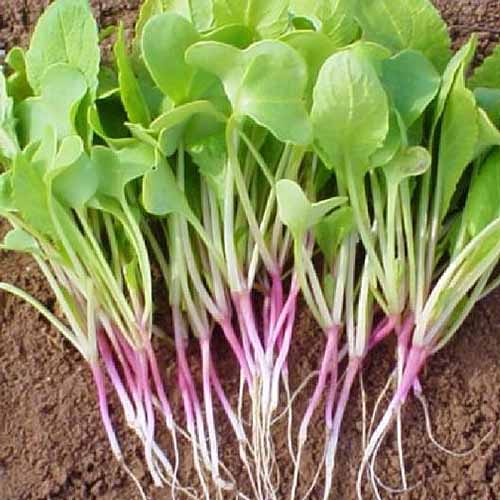Here’s how to handle the harvest for each scenario:
How and When to Harvest
Whether you’re aiming for a 2-for-1 harvest of both roots and greens, or a super-quick crop of sprouts or microgreens, you can look forward to good eating without a lot of effort.


Follow these directions for harvesting radish greens at each stage of growth:
Sprouts
Radish seeds are a popular choice for sprouting, and these can be ready to eat just three or four days from the time you begin.


Find full growing instructions in the Sprouting 101 guide from our sister site, Foodal.
In general, to sprout the seeds you’ll need a wide-mouth glass jar and a mesh or cheesecloth cover, or a commercial kit.
True Leaf Market sells stainless steel sprouting jar lids and five-tray seed sprouters that are perfect for this project.
The process involves soaking the seeds overnight in the covered container, rinsing the seeds, and letting them drain.


Stainless Steel Sprouting Jar Lids
You then set the container on its side on a stable surface in an area of your house that’s dark and in the 60 to 70°F range.
Or, if you’re using a kit that involves a tray or trays, you leave the container upright.
You repeat this once a day, rinsing and draining until the seeds sprout, which usually takes three or four days.


Five-tray Seed Sprouter
Once they have their first set of cotyledons and are about an inch long, you set the jar in sunlight for a couple of hours, which allows the sprouts to photosynthesize and gain some color. Then they’re ready to drain and eat.
You can store drained sprouts in an airtight container for six or seven days before you eat them.
Ordinary garden seeds are just fine for sprouting, or you might like to choose one of the seed mixes or varieties in unusual colors that are available commercially.
The ‘Red Arrow’ cultivar, for example, produces light red sprouts, which look great on the plate whether you’re eating them atop your avocado toast in the morning or garnishing the plates for an al fresco meal on your patio.


‘Red Arrow’
‘Red Arrow’ sprouting radish seeds are available in various packet sizes and one- and five-pound sacks from Eden Brothers.
Microgreens
When you plant radishes to harvest as microgreens, you won’t make any attempt to let them form substantial roots. Instead, plan to pick the young greens just after they form their first set of true leaves, usually at one and a half to two inches tall.
At this size, they’re mildly spicy and may sport a streak of color at the bottom, depending on the variety.


Use clean kitchen shears or a sharp knife to cut the microgreens at the soil line. Don’t handle them too much or they can get mashed and the texture will suffer.
Instead, cut them quickly. Then use your fingers to lift them into a zip-top storage bag or directly onto your cutting board or prep surface if you’re going to eat them right away.

